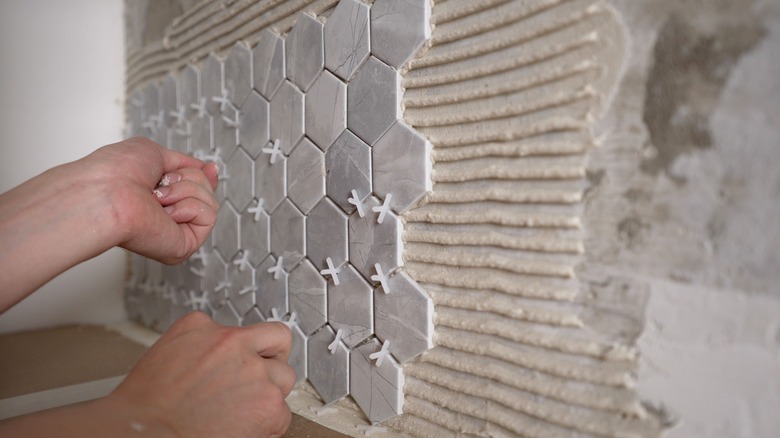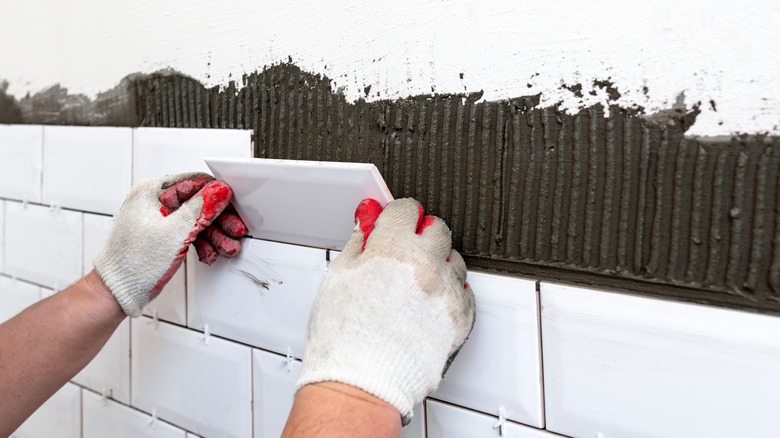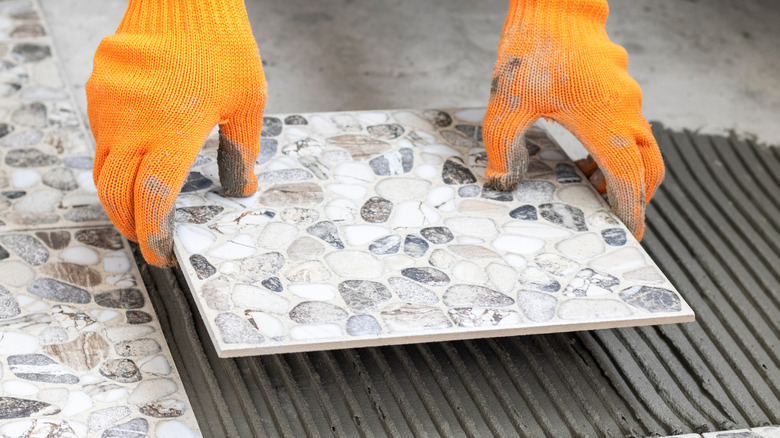What Is Tile Mastic?
Before beginning to tile a space, you'll need to create a plan, gather your tools, and (the fun part) choose your slabs. You'll also need to get the right tile adhesive. When researching the many different adhesive types, perhaps you've come across epoxy mortar, thin-set mortar, and tile mastic. Of all these types, tile mastic is the easiest to use, TileTools says, and because of this, maybe you've wondered if this substance will work for your project.
However, while tile mastic may be easy to use, it has some significant drawbacks. First, you cannot use this sticky adhesive in every area of the home. In fact, you can't use it in most spaces, so you'll want to read the information below to figure out if this adherent substance will work in your space. If you discover that tile mastic won't work for your project, you'll then need to know the pros and cons of the two other popular types.
Tile mastic explained
According to Contractors Direct, tile mastic is a glue-like adhesive. This glue used to be completely made from a mastic tree (hence the name); however, About Mechanics says that most products nowadays are not made from organic materials. Mastic is good for those inexperienced with installing tile, as it's easy to use and clean after. Fantastic Services points out that this substance comes pre-mixed as well. It can also be stored for longer than other materials and is a strong adhesive.
However, this glue for tiles has a number of significant drawbacks, per TileTools. For instance, it is not waterproof. If it gets wet, this substance will liquify and lose all its strength. Therefore, it's not a good choice for places with lots of moisture, like the bathroom, outdoor areas, and some places in the kitchen. Additionally, tile mastic can grow mold when exposed to moisture, which can be a huge safety hazard. About Mechanics warns not to use this substance with porous tiles like those made of natural stone, as they could soak up moisture and cause mildew growth. It also shouldn't be used on the floor, as it's too soft.
Other tile adhesive alternatives
Because tile mastic isn't heat or water resistant, you can only use it in a limited number of areas. The best places to use this substance are for a kitchen backsplash or wall, a wall in another room of the house that's never exposed to moisture, or around a fireplace, per Tremendous Renovations.
Porcelain Superstore also says that tile adhesives come in two basic forms: pre-mixed (like tile mastic) and powder. Thin-set mortar is a cement-like material that comes in a powder form and has to be mixed with water, per Fantastic Services. It's heat, mold, and water resistant, which makes it a good choice for bathrooms, kitchens, and outdoor spaces. However, it is prone to cracking.
Another powder option is the epoxy mortar. This substance is resin-based and very strong. Additionally, it's water, chemical, and grease resistant. However, epoxy mortar can be difficult to use and quite expensive. Therefore, it's typically only used by professionals.


